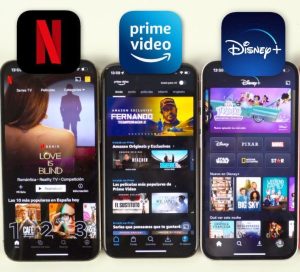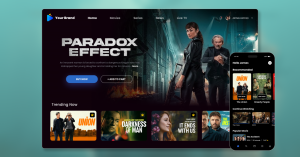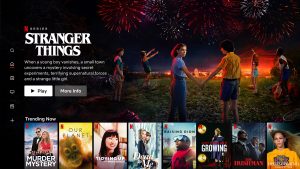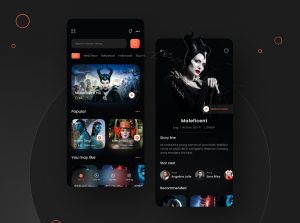Introduction
Streaming services like Netflix, Amazon Prime Video, and Disney+ have changed the movie industry in a big way. They’ve altered how movies are made, shown, and watched. With streaming, movies are no longer just made for theaters. They are made for people to watch at home, anytime they want. This shift has led to big changes in movie scripts, storytelling, and the overall movie experience.
In this article, we’ll look at how streaming has changed the way movies are written, produced, and enjoyed by audiences around the world.
The Rise of Streaming

Streaming has quickly become the most popular way people watch movies and shows. In the past, people had to go to the theater or wait for DVDs to watch films. But now, platforms like Netflix, Amazon Prime, and Disney+ allow viewers to stream movies anytime, anywhere. This rise in streaming started around the mid-2000s and has grown rapidly in the last decade. The convenience of streaming has made it a go-to choice for millions of people around the world.
How Streaming Changed Movie Scripts

Before streaming, movie scripts were written with theaters in mind. Writers focused on creating stories that would work well on the big screen. But with streaming, filmmakers now have more freedom to try different things. They no longer need to follow the traditional rules of movie-making.
1. More Freedom for Storytelling
Streaming platforms give filmmakers the freedom to tell unique stories. Movies on streaming services can be longer or shorter than traditional films. Filmmakers can explore deeper characters and different types of stories, which might not have worked in theaters. For example, Netflix has produced movies and shows that experiment with unusual storylines or cover darker themes.
2. Focus on Characters
Movies on streaming platforms tend to focus more on character development. Traditional movies often focused more on the plot, but streaming allows filmmakers to dive deeper into who the characters are. This leads to more interesting and complex characters that keep audiences hooked.
How Streaming Affects Movie Production

Streaming has also changed the way movies are produced. Streaming services need a lot of content, and they want it quickly. This means that movie production is now faster and often has a different approach.
1. Faster Production
Streaming services don’t take years to make a movie like traditional studios do. Instead, they produce movies quickly to meet the high demand for new content. This means filmmakers don’t have as much time to perfect their scripts, but they still have a lot of creative freedom.
2. Bigger Budgets
In the past, streaming platforms didn’t have the budgets for high-quality movies. But now, services like Netflix and Amazon are spending a lot of money to create big-budget films. They are attracting top talent and using advanced technology to produce movies that compete with traditional Hollywood films.
Changing How People Watch Movies

Streaming has also changed how we watch movies. Now, we can watch movies anytime we want, without needing to go to a theater. This has affected both how movies are made and how they are enjoyed.
1. Binge-Watching
One of the biggest changes streaming has brought is binge-watching. People can now watch an entire season of a show or movie series in one sitting. This has led filmmakers to create stories that are designed to keep viewers watching episode after episode, instead of just focusing on a single movie.
2. Movies for Everyone
Streaming has made it easier to watch movies from all around the world. Unlike traditional theaters, where films are often only shown in a few countries, streaming platforms make movies available everywhere. This means that viewers can enjoy movies in different languages and from different cultures, expanding the types of stories that are told.
The Cost of Streaming

Although streaming is convenient, it comes with its own set of costs. Many people subscribe to multiple streaming services to get access to a wide range of content. This can add up over time and become more expensive than traditional cable. Some people are even canceling subscriptions when they no longer need them, which shows how important it is for streaming platforms to offer new and exciting content to keep their viewers subscribed.
Increased Access to Content

One of the biggest benefits of streaming is that it gives people access to a huge variety of movies and shows from around the world. Unlike traditional TV or theater, streaming platforms don’t limit what you can watch based on time or location. If you want to watch an old classic or a foreign film, you can easily find it online. This easy access helps people discover new genres, cultures, and stories they might not have seen otherwise.
More Flexible Viewing Options

Streaming allows viewers to watch movies in their own time and at their own pace. People can pause, rewind, or skip parts of a movie as they like, which is not possible in a theater. This flexibility also means that people can watch a movie over multiple sittings if they don’t have time to watch it all at once. It’s a big shift from the rigid schedule of theaters or TV shows.
Changing Movie Formats

Streaming platforms are also experimenting with different ways to tell stories. For example, some movies and shows are designed to be interactive, meaning the audience can choose what happens next in the plot. This is a new kind of experience that combines traditional movie-watching with gaming. It gives viewers more control over the story, making it a more personal experience.
Global Reach of Streaming
Streaming has made movies and shows accessible to people around the world, breaking down geographic and cultural barriers. No matter where you are, you can watch movies from different countries and experience new stories. This has helped filmmakers reach global audiences and share their work in ways that were not possible before, allowing more people to enjoy diverse films from different parts of the world.
Challenges of Streaming
While streaming has many advantages, there are also challenges. For one, there’s a lot of competition among streaming platforms. Each service wants to offer unique content to attract subscribers, which can lead to oversaturation of options. Additionally, some filmmakers worry about the impact of streaming on traditional movie theaters, which have seen fewer people attending due to the rise of online viewing. There’s also the issue of how to ensure fair payment for content creators, as the revenue model for streaming is different from traditional box office sales.
What’s Next for Streaming and Movies?

As streaming continues to grow, movie-making will continue to change. We’re likely to see even more innovation in how movies are made, distributed, and watched.
1. New Technology
In the future, new technology like artificial intelligence (AI) and virtual reality (VR) could change how movies are made. Filmmakers will have more tools to tell stories in new ways, and movie scripts will likely become more interactive and personalized.
2. Interactive Movies
Streaming platforms are already experimenting with interactive movies, where viewers can choose what happens next in the story. This could become a bigger part of the movie experience in the future, allowing people to shape the plot as they watch.
Comparing Traditional Movies and Streaming Movies
Streaming has changed not only how movies are made but also how they reach their audience. Let’s compare traditional movies with movies made for streaming platforms:
| Aspect | Traditional Movies | Streaming Movies |
|---|---|---|
| Target Audience | Aimed at a wide audience for theaters | Targeted at specific groups, with more variety |
| Length of Movies | Usually 90-120 minutes | Can be shorter or longer, depending on the story |
| Focus of Storytelling | Focused on plot and spectacle | Focused on characters and complex stories |
| Audience Interaction | Passive watching in theaters | Active engagement with the option to watch anytime |
| Release | First in theaters, then home video | Available instantly on streaming platforms |
| Revenue | Box office and DVD sales | Subscription fees or ads |
Analysis Table: How Streaming Changed Movies
| Factor | Traditional Movies | Streaming Movies | Effect |
|---|---|---|---|
| Content Creation | Mostly big studios and big budgets | Independent filmmakers, global talent | More variety, fresh perspectives |
| Viewing Style | Must be watched in theaters | Watch anytime, anywhere, at your own pace | More convenient |
| Story Focus | Focus on plot and spectacle | Focus on characters and deep stories | Richer characters, unique stories |
| Movie Length | Standard 90-120 minutes | Flexible, can be longer or shorter | More options |
| Revenue Model | Box office, DVDs, rentals | Subscriptions, ads, pay-per-view | Different business model |
Comparative Table: Traditional vs. Streaming Movies
| Aspect | Traditional Movies | Streaming Movies |
|---|---|---|
| Target Audience | Broad, theater-goers | Niche, targeted viewers |
| Production Speed | Slow, long development | Quick, fast production |
| Revenue Source | Box office, DVD | Subscriptions, ads, direct sales |
| Global Reach | Limited to theaters and regions | Available worldwide on demand |
| Movie Experience | Passive viewing, theater-based | Active, flexible viewing on different devices |
Conclusion
In conclusion, streaming has changed almost every part of the movie industry. Movie scripts are no longer just made for theaters but for a global audience that wants flexibility and unique storytelling. Filmmakers now have the freedom to explore new ideas, and viewers can watch movies on their own terms. As streaming continues to grow, we can expect even more changes to the way movies are made and enjoyed.
Final Thoughts
Streaming has transformed the movie industry, bringing exciting changes in how stories are told and how movies are enjoyed. The future of movie-making will continue to evolve, driven by technology and the need to satisfy a global audience.









